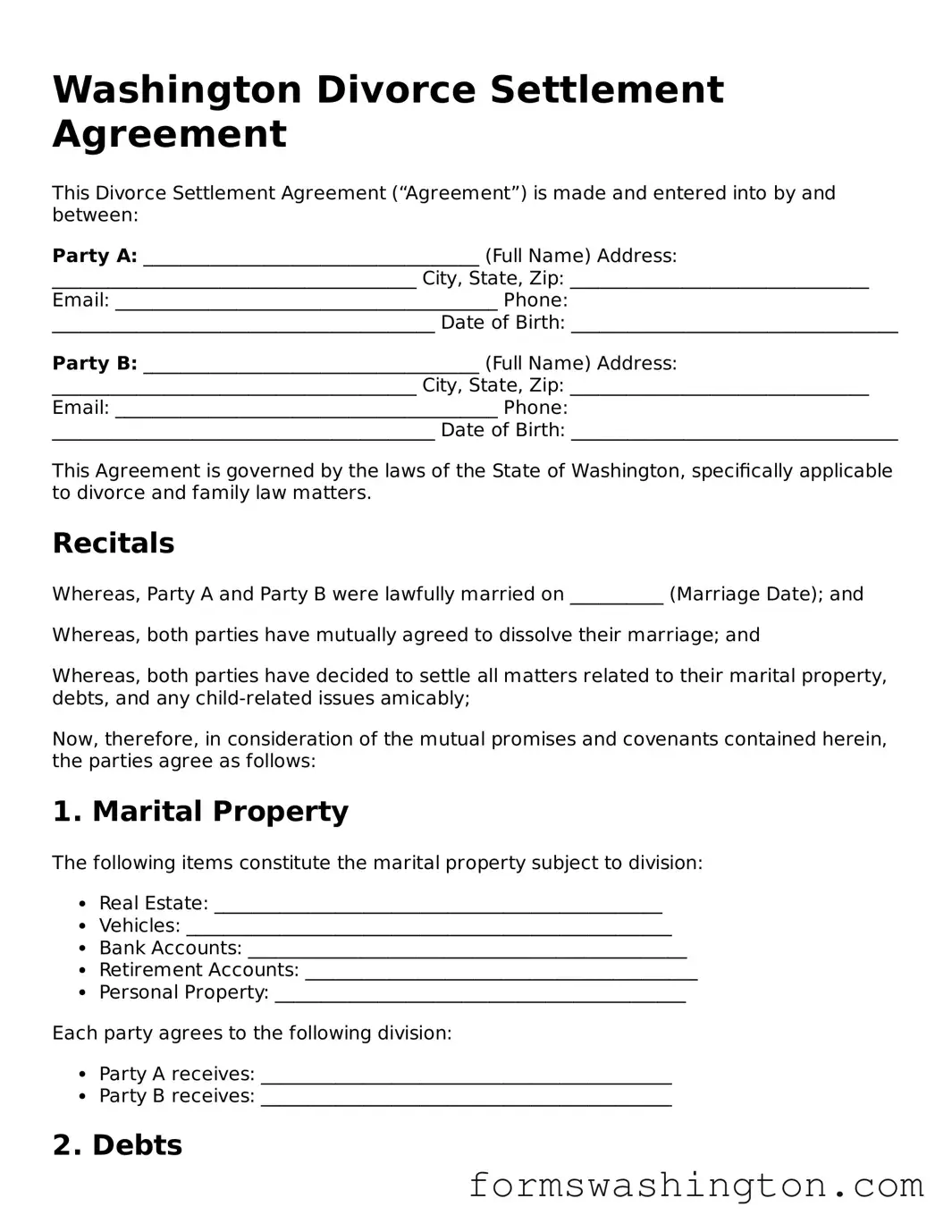When navigating the emotional and complex journey of divorce, a Washington Divorce Settlement Agreement form serves as a crucial tool for couples seeking to finalize their separation amicably. This form outlines the terms and conditions agreed upon by both parties, addressing key aspects such as asset division, child custody arrangements, and spousal support. By detailing how property will be divided, it helps ensure that both individuals leave the marriage with a clear understanding of their rights and responsibilities. Additionally, the agreement covers child support obligations, which are vital for the well-being of any children involved, ensuring that their needs are met even after the divorce. The form also provides a framework for resolving disputes that may arise in the future, fostering a sense of stability and predictability. Ultimately, the Washington Divorce Settlement Agreement form is not just a legal document; it represents a mutual commitment to moving forward with respect and cooperation, paving the way for a new chapter in life.
